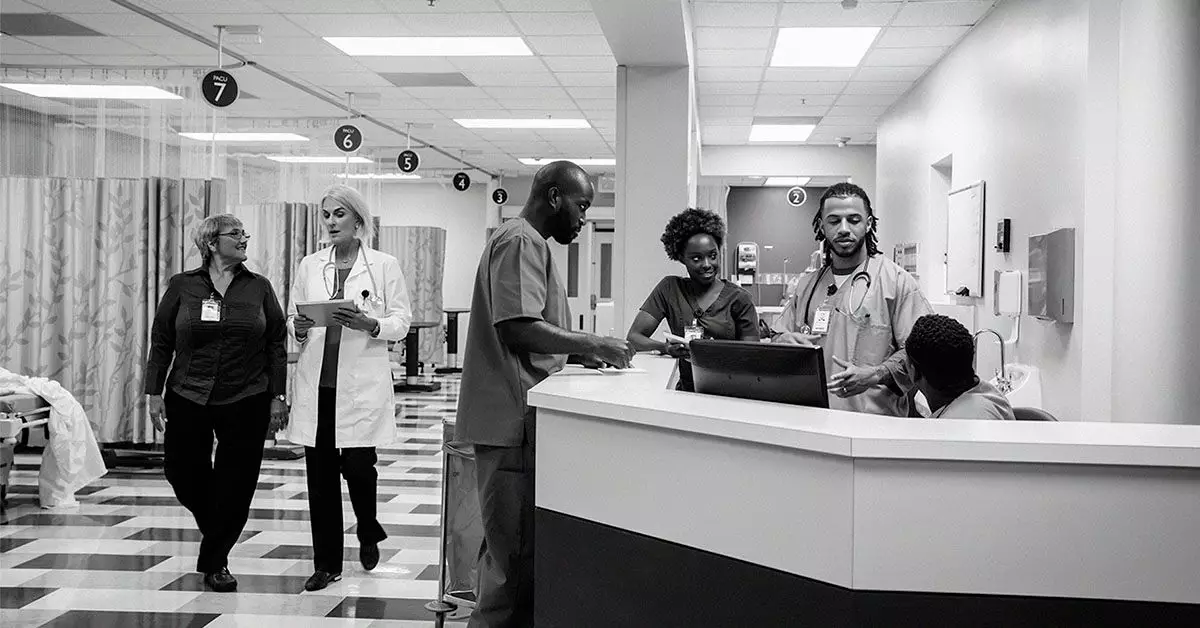In the fight against cancer, few treatments come as transformative as bone marrow transplants, also known as stem cell transplants. This revolutionary medical procedure offers renewed hope to patients grappling with lymphoma—be it in remission or relapsed—by reintroducing healthy blood stem cells into the body. Typically administered during or following aggressive cancer treatments, blood stem cells serve as a vital replacement for those cells devastated by illness or the rigors of chemotherapy and radiation.
Doctors employ this strategy to wield high-dose chemotherapy and radiation with lethal precision against cancer cells. Still, these potent treatments can wreak havoc on the bone marrow, critical for producing blood cells. The subsequent bone marrow transplant becomes essential for replenishing these vital stem cells, facilitating recovery after such rigorous treatments. If you consider the process, the sophistication is staggering: doctors can employ either autologous or allogeneic transplants, depending on whether the stem cells used are the patient’s own or sourced from a matched donor.
The Extraction Process: A Painstaking Yet Necessary Procedure
The journey to recovery begins with the meticulous extraction of stem cells. For autologous transplants, this involves collecting stem cells from the patient’s own body—usually taken from the pelvic bones under general anesthesia, minimizing discomfort. A surgeon skillfully uses a large needle to retrieve bone marrow, which can take one to two hours. Though some soreness may occur post-procedure, pain management strategies effectively balance the experience, allowing for recovery within weeks, as the body naturally replenishes removed stem cells.
Once extracted, stem cells are subjected to a freezing process for later use, preserving their viability until they are reintroduced into the patient’s system post-treatment. It is heartening to realize that the future of countless patients may hinge on this procedure, with autologous transplants being the standard for treating young, healthy individuals with Hodgkin’s lymphoma who have not responded to initial therapies.
Different Types of Transplants: Choosing the Right Path
The choice between an autologous and an allogeneic transplant is a critical one, hinging on various medical factors. Bearing in mind that an autologous transplant utilizes the patient’s own cells, a key advantage is the reduced risk of complications typically associated with donor cells. However, there exists a significant risk: the transplanted cells may inadvertently include cancer cells, potentially reinstating the very illness they aim to cure.
On the other end of the spectrum, the allogeneic transplant involves collecting stem cells from a compatible donor. This presents its own set of challenges, including the possibility of graft-versus-host disease (GVHD), where the immune cells in the donor’s stem cells attack the patient’s healthy cells. While this condition can range from mild to severe, it emphasizes the importance of thorough pre-transplant evaluations, including careful matching based on human leukocyte antigen (HLA) proteins to minimize complications.
The peripheral blood stem cell transplant serves as an alternative stepping stone, where stem cells are collected directly from the blood instead of the bone marrow, showcasing the multiplicity of options within this innovative field.
Success Rates: A Beacon of Hope
The statistics surrounding bone marrow transplants can be astoundingly hopeful. Research indicates that approximately 30% to 50% of individuals with relapsed T-cell lymphoma experience long-term remission after undergoing allogeneic transplantation. Furthermore, about 60% of patients with Hodgkin’s lymphoma and 50% with non-Hodgkin’s lymphoma are still alive a decade following an autologous transplant. Such numbers warrant cautious optimism; they symbolize not just the effectiveness of the procedure but the resilience of the human spirit in the face of adversity.
What’s particularly compelling is that those who survive the long-term after 2 to 5 years have an average life expectancy that aligns with the general population, showcasing that advancements in treatment are paving the way towards more favorable outcomes.
Patients who are candidates for a transplant should have robust discussions with their healthcare providers about the intricate details involved in the procedure. Factors like age, overall health, response to prior treatments, and the stage of lymphoma are weighed. Involving a solid support system while navigating these critical junctures can significantly enhance the recovery experience.
The Road Ahead: Challenges and Future Directions
While bone marrow transplants show immense promise, they are not without risks. Infections, varying degrees of GVHD, and other complications loom as persistent challenges that cannot be overlooked. Patients must remain vigilant about any post-transplant side effects, communicating these to their healthcare teams promptly.
Despite these concerns, bone marrow transplants represent a monumental leap in lymphoma treatment, constantly evolving through research and clinical advancements. Exploring each patient’s unique needs, providers can tailor interventions to optimize individual outcomes. The ongoing quest for matching donors is becoming increasingly sophisticated, and comprehensive techniques in stem cell collection aim to elevate transplant success rates even higher.
As we look toward the horizon in oncology, bone marrow transplants not only shine a light on cancer treatment pathways but illuminate the very essence of resilience and recovery, making them a powerful beacon of hope for patients and their families.

